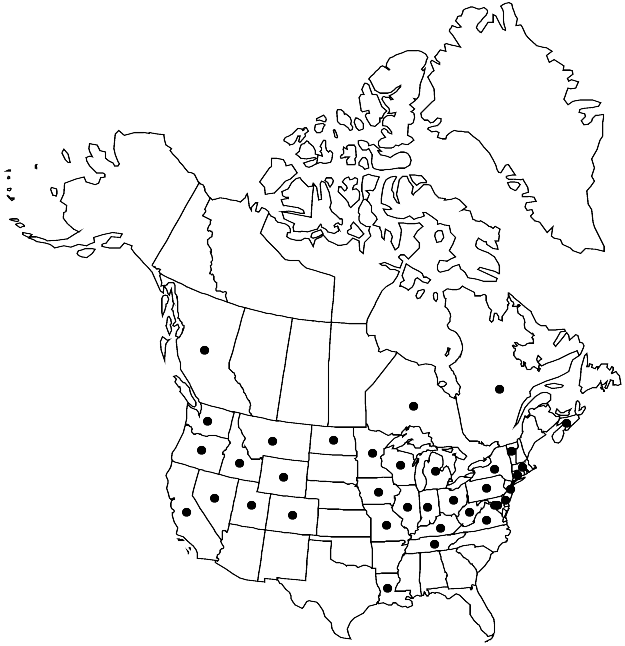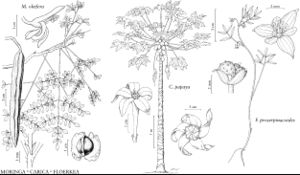Floerkea proserpinacoides
Ges. Naturf. Freunde Berlin Neue Schriften 3: 449. 1801.
Plants (3–)5–30(–38) cm, herbage glabrous. Leaves: petiole 0.5–4 cm; rachis 2.5–5 mm; leaflets 3–7, 7–12 × 1–3.5 mm, apex obtuse or acute. Pedicels 0.5–2 cm (± equal to subtending petiole at anthesis, elongating 1.5 times by fruit maturity). Flowers: sepals green, 5-nerved, 2–6 mm; petals white, greenish white, or pale pink, oblanceolate to narrowly elliptic, 1.4–2 mm; filaments filiform, 1–1.5 mm; anthers yellowish, broadly ellipsoid, 0.2–0.3 mm. Mericarps green to brown, somewhat fleshy, 2–3.5 × 2–3 mm (often only 1 seed maturing per flower). 2n = 10.
Phenology: Flowering spring–early summer.
Habitat: Floodplain forests, swamps, wet-mesic coniferous or broadleaf woods, alpine meadows, pastures, moist areas in sagebrush or desert washes
Elevation: 50-2600(-3200) m
Distribution

B.C., N.S., Ont., Que., Calif., Colo., Conn., Del., D.C., Idaho, Ill., Ind., Iowa, Ky., La., Md., Mass., Mich., Minn., Mo., Mont., Nev., N.J., N.Y., N.Dak., Ohio, Oreg., Pa., Tenn., Utah, Vt., Va., Wash., W.Va., Wis., Wyo.
Discussion
The stems of Floerkea proserpinacoides have a spicy flavor and are eaten in salads. A flower of F. proserpinacoides is the logo for the Flora of North America project.
Selected References
None.
